Text
Brightspace Article
Well, here we are. End of year three, semester two. Who would have thought the day would finally come where everything is finished and all that is left to do is start life in the real world. I have no doubt that if I were at any other university, I would not be anywhere near as prepared as I am having studied at Holmesglen. There is a reason the Sports Degrees Internship Program is the ‘flagship’ of the degrees, it did just as much as the two-and-a-half years prior to prepare me for where I am now.
I was lucky enough to receive three internships. One with Basketball Victoria in the media communications space, another with Cricket Victoria High Performance in communications operations and thirdly with Cricket Southern Bayside as a media projects assistant. At all three I was creating high quality work that has been published and viewed by tens of thousands.
Basketball Victoria was my full internship (228 hours) and involved me doing a wide array of roles. I was given a taste of the sports media landscape in its entirety, from writing articles to photography and even live commentary (my personal favourite). Sitting under the learning tree of Jarrod Potter, I experienced the fast-paced, broad, unbelievably interesting and incredibly fun world of what it means to work at a state sporting organisation. A personal highlight for me during my time at Basketball Victoria was having the opportunity to commentate the Big V Men’s Grand Final series alongside Justin Nelson (General Manager of the New Zealand NBL).
Having the opportunity to work two days a week at the CitiPower Centre was amazing. Despite the early mornings (something I quickly had to get used to), rubbing shoulders with some of Australia’s best cricketers with the High Performance team at Cricket Victoria was awesome, and interviewing them was even better (and taught me how to not be starstruck on camera). My biggest achievement throughout not just my CV internship, but overall, was the creation of the 2019/20 Youth Premier League booklets. This project felt like a summation of the entire course as it involved graphic design, interviewing, journalism and writing, all skills I learnt and fine-tuned at Holmesglen.
Looking to the future, the media communications industry calls my name. Having spent the last year working in local sport in a media communications aspect, I now know that is exactly what I want to do. In the long term, I would love to work in radio or TV, specifically in sports commentary.
Coming into the course, I had no idea where I would fit in the wide world of sports media. Three years later, the hard part is picking just one.
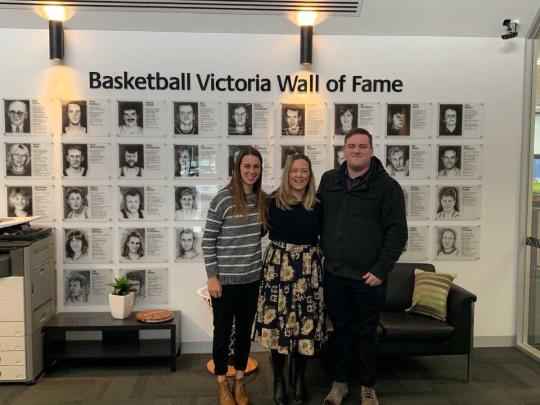

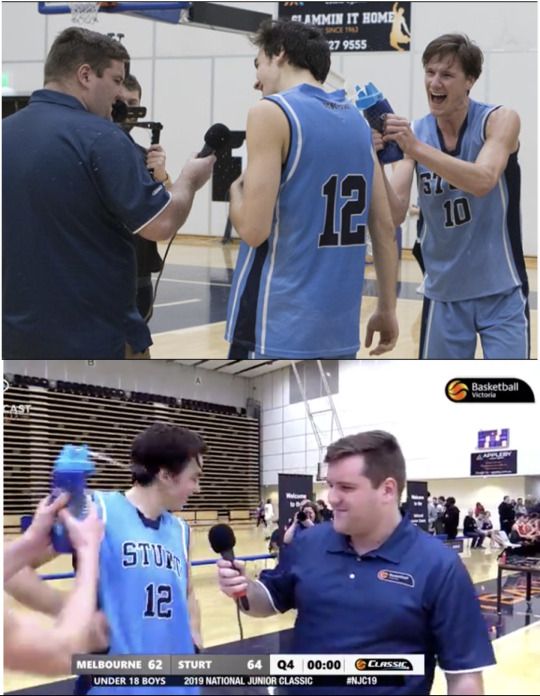
0 notes
Text
Final Reflections
My internship showcase was probably my best presentation throughout my three years at Holmesglen, which is appropriate considering the context. My biggest worry coming in to the presentation was running over time. We were given a ten minute limit with two minutes leeway, however I had three internships to talk about with a lot of key outputs I believe were noteworthy. This meant I had to be very stingy with what I was and wasn’t going to mention, and also meant I did not talk about a number of interesting things and things I was very proud of.
I have always been very confident in presenting in front of groups, so I was not nervous, and as I knew exactly what I was going to say and had practiced over and over, I was as prepared as I could possibly be. This was evident as my presentation went as perfect as it could and the feedback I received on my slides and body language was overwhelmingly positive. I received great comments from Sam and Robbie on the presentation and overall time during the course, and also received good feedback from my BV host Jarrod who attended. Probably the best feedback I received was when Aaron from AFL Outer East said he would hire me on the spot based on some of the work I created and highlighted during my presentation. I did not expect that at all and certainly filled me with confidence heading into the real world.



Creating my internship presentation gave me a good chance to reflect on all that I completed this semester, and compare it to the standard of work I was creating when I started the course. The output quality is night and day in all facets. There is no way I would have been able to write a series of questions, interview someone on camera, edit the video myself and then share it online. Three years ago I would have no idea where to begin. This is now something I am paid to do every week, along with create marketing strategies, website management and even sports commentary. All of these skills I picked up over the course, and had the chance to showcase over the semester at my internships.


The standard of graphics I was creating at the beginning of the course (Semester 2 Social Media)

The quality of work I am now producing.
I feel as though I learnt just as much during my internships as I did in the course. On top of the hard skills I picked up, having the experience of working in the industry without the pressure of professional expectations was invaluable. It exposed me to a range of things I would not have even thought about such as when to leave my desk and stretch my legs, sending follow-up emails and the best ways to network with contacts. Ideologies such as these cannot be taught in lecture theatres as everyone is different, but not having to stress about these as soon as you start in the industry relieved so much pressure and puts us ahead of everyone else at other universities. The internships also gave us valuable contacts in the industry which can be used as job references or potential people to contact if we are seeking employment.
0 notes
Text
Supervisor Application Reflection
My evaluation from Basketball Victoria was almost exactly as I expected it to be. Throughout my time there, I had many conversations with the BV team about areas I needed to improve in and which areas of mine were my strengths. One major piece of advice he gave me and reiterated a number of times was to ‘be a master of all trades and an expert in one’. I believe I live up to that moniker through the vast array of work I completed and created across my three placements.
When reviewing my evaluation form from BV, I received three ‘satisfactory’ marks out of the fifteen criteria. These were for my initiative, leadership and pace of work, all of which I agree with. I struggled to show initiative as, at first, I was very nervous and was afraid to do anything without first consulting someone in the office for fear of making a mistake or doing something out of line. As I became more comfortable in the environment I began to use more initiative and work more autonomously. Leadership was a difficult skill to demonstrate my time at BV as I was mostly completing tasks which I was given, however I attempted to show this at events by organising interviews and photos where possible. Again, it lends itself back to lacking confidence, but as this grows, many other skills come along with it. My pace of work is an area that I have listed in this folio a number of times as an area of continued development. I certainly feel that I have greatly improved however, as I would have been lucky to have received a ‘satisfactory’ mark for this skill at the beginning of my time at BV. I would always attempt to make my work perfect, and would labour over unnecessary details instead of sending it for editing (which would pick up on the small errors I was trying to avoid). Some great advice I received at BV was to ‘balance out work output quality versus the time available’ and ‘stop searching for perfection’.
I received ‘excellent’ marks for my presentation and punctuality. I believe in any organisation, let alone one in which I am completing an internship, that these are non-negotiable. You may not be able to control your knowledge and output level at first, but you can control what time you arrive and how you look. I would always arrive at least five minutes before I was asked to, and would be dressed appropriately and neatly groomed. Not only does make me seem more professional, but also made me feel more comfortable and confident.
Another area of development I greatly improved on, but could still get much better at is photography and videography. Continuing with the theme of being as multi-faceted as possible, I had not spent much time around cameras, which is becoming a more necessary skill as the industry shrinks. My second day with the BV team was completing photography and videography at a major national tournament, which was very scary for me as I was thrust into an area I felt was completely out of my depth. As my time continued and I was given the camera at numerous events and tournaments, my skills improved but still left with much to refine.
Also noted in my evaluation form was a range of skills I developed. Along with working within departmental structures, which I had never done before, was writing for communications outcomes. I feel I have always been a strong writer, but I diversified my knowledge of different writing styles, specifically writing in a comms style instead of traditional journalism style. I also learnt about social media strategies and how to best utilise different platforms to benefit your organisation.
0 notes
Text
Career Aspirations
Coming in to this course, I wanted to work exclusively in social media marketing. Over the three years, my goals have shifted. I acknowledge that my long term dreams will take a lot of work and will not be profitable and sustainable unless I am right at the top of the industry, but I will continue to work until I achieve all of my dreams.
My dream is to be an on-air radio or television announcer. I had my first taste of live broadcasting when I began commentating NBL1 basketball through the winter. I quickly learned that I really enjoyed doing it and wasn’t bad. Every week I was improving and I took every opportunity to commentate throughout my BV internship, which included junior and senior games and a range of co-commentators. I have received a lot of positive feedback following everything I have commentated, including one person with a history in broadcasting telling me he believes I can make a career in commentating.
I also have a keen interest in radio and television. Every assignment I have completed that includes a video or audio component I have thoroughly enjoyed. I have also created some of my own content outside of university through in the form of podcasts and a range of video work. I plan on building my folio of broadcasting work as much as possible in the hope I can earn employment anywhere within the broadcasting industry, with the hope of one day hosting a regular show.
I acknowledge that working in broadcasting will not happen overnight, and I see it as a long-term, eventual job. While working towards my goal of earning a position on radio or TV, I am looking for full-time work in the digital marketing/social media landscape, hopefully for a sports team or league. I currently work in the digital/social media industry with the Southern Basketball Association on a part time basis, and will hopefully turn this into a full-time position. I am also currently seeking full-time work throughout the industry.
I have already applied for a number of jobs in the industry, covering marketing, communications, content creation, graphic design, radio and television. I have been looking across Melbourne, regional Victoria, interstate and overseas. It has been exciting seeing jobs that I am qualified for. The first job I applied for was as a Marketing and Communications Assistant at Sports Medicine Australia. I was surprised at how quick the process was, as I received a call and interview within a week of applying. I felt confident heading in to the interview, having completed the preparation in TTPP and conducted the interviews themselves. I was well prepared for the interview and, retrospectively, am happy with the majority of my answers. I received positive feedback from the interviewer on my resume and folio, and was told that I was one of five shortlisted for interviews out of 78 applicants. This gave me a lot of confidence in myself applying for jobs in the industry.
I have also applied for a Digital Content Producer position at Netball NSW, TV Editor at Crocmedia and Community Producer at triple j Unearthed.
0 notes
Text
Achievements & Milestones
I had a number of achievements throughout my time at Basketball Victoria. Every time I reached one of these milestones, it helped build my confidence and made me realise I was ready to work in a professional environment. A number of these skills were new to me, so learning them and reaching a workplace standard was exciting. As well as this, improving on skills I already had and adding more experiences to my resume was also a huge step in my career path.
One area which I have noted several times throughout the folio has been my improvement in photography and videography. Prior to beginning at BV, I had almost zero experience with cameras and photography. Having the chance to be taught the basics and a number of advanced techniques has greatly improved my knowledge and understanding of sports photography. Throughout the internship and, in particular, attending a number of events including the National Junior Classic, Casey Stadium opening and Jamboree, I sharpened my skills behind the camera to the point the staff had enough confidence in me to leave me to my own devices. I was also taught a number of videography skills through my time at BV. These are similar to photography, but I was explained some big differences and specifics.
Coming into my BV internship, I had very little video editing experience. I had noted from the very beginning that this was an area I needed to improve in and jumped at any opportunity to either watch, ask questions or create videos. I was tasked with planning, executing and creating all the media at an event. This included creating a spreadsheet including all equipment, planned content, timelines and contingency plans for the day. After capturing the footage, I was taught the intricacies of Adobe PremierePro (which I had never used before) and created the video including an intro, outro, music and graphics.
CLICK HERE TO VIEW VIDEO
One of my proudest achievements at my CV internship was the creation of the season programs for the upcoming Youth Premier League. This involved using Adobe InDesign, a program I had never used before and had very little understanding of. In order to complete this task, I had to quickly teach myself how to use InDesign at industry standard. This was very difficult as I had been given the most recent version of the program but all tutorial videos were of older versions. Once I go the hang of the intricacies of the program, building the booklet was not overly difficult but very time consuming.
To create the season programs, I had to write a number of articles, interview coaches and liaise with sponsors, managers, players and a number of senior officials at Cricket Victoria. This forced me to be incredibly organised, as it takes a while for things to be ticked off by the higher ups. The end result was my greatest tangible achievement across my internship, as it felt like a summation of almost everything I learnt across the course.
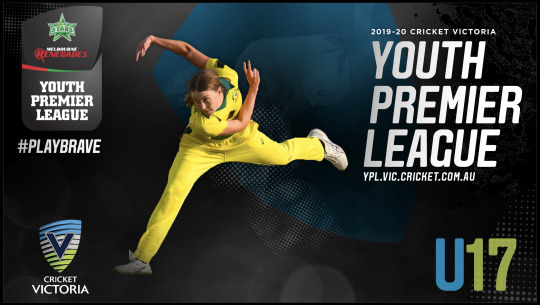
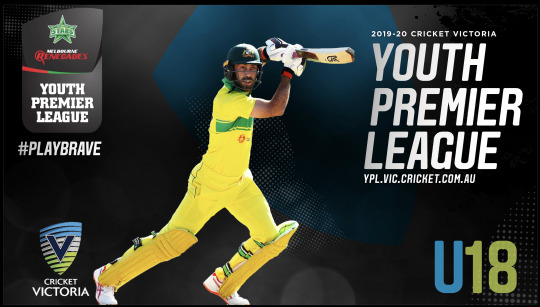
The favourite thing I completed across all of my internships was the opportunity I had to commentate basketball, at a number of different levels. I have wanted to be a sports commentator for a while now, and have put effort into building my resume getting as much experience as possible. To be able to commentate juniors and seniors in both mens and womens, and alongside a number of experienced commentators and experts has been instrumental in my career and taught me lessons I will carry with me through my entire life.
0 notes
Text
Challenges throughout internships
I feel as though the majority of my internship was relatively smooth sailing. That is not to say I was never challenged, as I certainly was, but I found a way to work through and overcome any issues I faced. I have always believed that my professionalism and maturity suited that of a business, as I know when it is appropriate to have a laugh and act more casual, and when it is time to knuckle down and focus on completing tasks.
My biggest challenge was to do with my confidence. As mentioned before, I felt out of my depth when I first started at BV. This meant at times I was not asking questions when I did not fully understand a task I was given, for fear of being seen as dumb. Once I began producing good quality work, my confidence rose and I was comfortable in asking questions and seeking clarification on things I was unsure about.
My initial lack of confidence also meant I did not feel comfortable in suggesting ideas. My first day in the office at BV I was sitting in a meeting and had some suggestions for items that were brought up, but did not feel confident in saying them as I was new and felt like my ideas were not good enough. The BV staff were open to all ideas and at times sought out my opinion on items they were thinking of producing or strategies they were considering rolling out. As I began to feel more comfortable, I felt more confident in adding my two cents worth in meetings and planning sessions. A handful of my ideas were even put into place, such as a ‘sights and sounds’ video for the BV Metro Under-12 showcase and a number of extra strategic elements added during the Big V Grand Final live streams.
Another issue I faced was being tasked with things I have either never attempted, or things I struggle with. This is a major part of the working environment (professional development) but as I was already nervous and lacking confidence, the idea of attempting something for the first time did not sound appealing. My internship host at BV encouraged me to try things I had never done before, as he noted that you should be able to work entirely autonomously and be able to do everything. For me, this meant photography and videography. At first, I struggled with this, and whilst I am far from an expert, I believe I have greatly improved in this area.
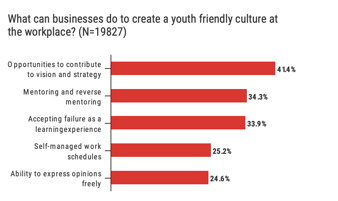
Basketball Victoria has done a good job at making the workplace ‘youth friendly’. I felt comfortable, respected and appreciated working in the office. (Global Shapers Community 2017)
An area in which I did not necessarily struggle in, but was not used to, was following style guides. This issue did not arise much when completing my BV internship as the graphics I was creating were given to me within a template and I was given the font files, but did arise when I started at CV.
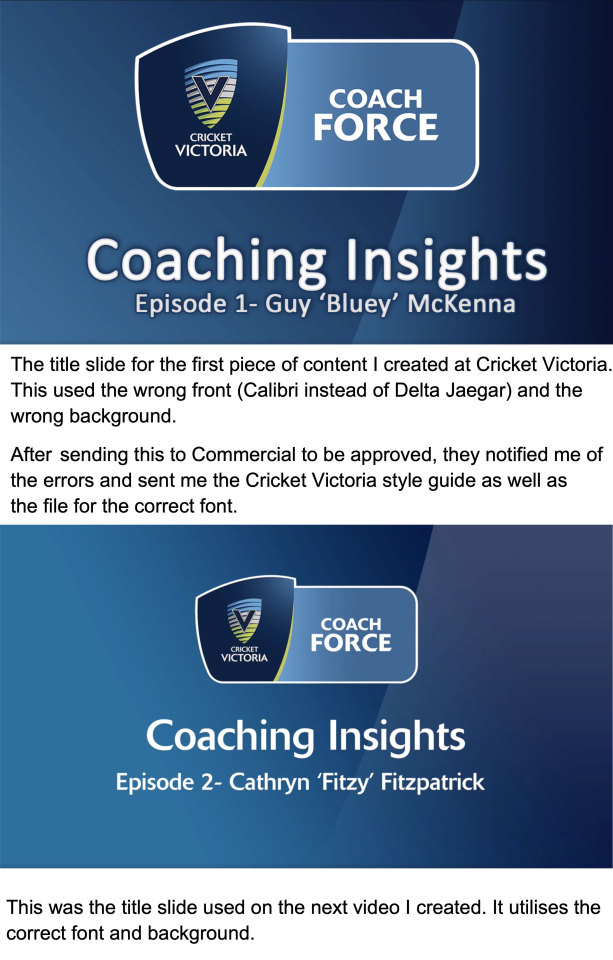
After making the error once, I did not make it again. After reading the style guide, and having a meeting with a staff graphic designer, every other visual piece of content I created fit in with the style guide perfectly.
References
Akorede, S 2017, 5 ways to promote a youth-friendly culture in the workplace, viewed 24 October 2019
https://www.weforum.org/agenda/2017/10/business-leaders-here-are-the-5-ways-to-promote-a-youth-friendly-culture-at-the-workplace/
Global Shapers Community 2017, ‘Global Shapers Survey’, World Economic Forum, viewed 24 October 2019
http://www.shaperssurvey2017.org/static/data/WEF_GSC_Annual_Survey_2017.pdf
0 notes
Text
Being an effective team member, contributor, building confidence & being efficient
Tarricone and Luca (2002) quantify successful teamwork in six factors; commitment to team success and shared goals, interdependence, interpersonal skills, open communication and appropriate team composition, commitment to team process, leadership and accountability. I believe I have demonstrated all of these skills throughout my internships so far.
It is difficult to measure my commitment to success/shared goals, but I am dedicated to getting the most out of myself and creating the most high quality work which will benefit both myself (building my resume, networking, potential job opportunities) and the organisations I am working for (having high quality content to share). This has included a number of collaborative tasks and sharing ideas, of which a number have been utilised and put into practice.
In terms of my accountability, I always show up on time either to the office or any events I am requested to attend. This is highlighted by my mid and end evaluations and receiving high marks for punctuality. I am also trusted to create work at a standard that organisations as recognisable as BV and CV would put their brand marks on, which I believe I have consistently upheld.
I feel like I have contributed greatly at all of my internships in a number of ways and utilising a range of skills developed over my time in the course. At BV, I began by almost exclusively writing content for the BV website, before shifting to work with the Big V team and covering all mediums. I also contributed within team meetings, strategic planning and marketing campaigns.
Through my time at CV/CSB, I feel like I have contributed through a range of strategic ideas, but have not had the time to see many of them come to life. I have still contributed greatly using my expertise in social media content creation, strategy, communications and graphic design.
Confidence and efficiency are two areas I know I need to improve on. Upon beginning my internship, I lacked any confidence and felt I was completely out of my depth being in a professional environment. Collating my resume definitely helped in building my confidence as I had the chance to reflect on the amount of high quality work I had completed. As I began completing tasks at my internships and saw my work being published, my confidence built.
I still tend to be hyper-critical and overthink my work, which leads to me spending too long on tasks trying to make them perfect instead of making them very good. This effects my efficiency, as I spend too much time editing and titivating, instead of submitting it to sending it to the be edited. My internship host at BV noted on my final evaluation sheet that I need to find the balance between quality and available time.
References
Tarricone, P & Luca, J 2002, ‘Successful teamwork: A case study’, Edith Cowan University, viewed 21 October 2019
http://www.unice.fr/crookall-cours/teams/docs/team%20Successful%20teamwork.pdf
0 notes
Text
Finding My Feet & Initial Tasks- Cricket Victoria
Cricket Victoria- High Performance
Having already been at Basketball Victoria for a significant amount of time, I felt much more comfortable starting at Cricket Victoria. I was far less nervous starting and had a much clearer idea of how to assimilate into the professional work environment. I was left to my own devices much more from the start as I was in a department that did not have any marketing, media or communications staff. This led to one small issue as the first thing I created was using the incorrect font. This was quickly resolved as I received an email from the commercial team with the appropriate font and style guide.
The first task I completed with CVHP was to interview Guy McKenna as part of a new online series the team had planned. I have since interviewed a range of talent, as well as edit and publish the interviews on Facebook.
CRICKET VICTORIA COACHING INSIGHTS PLAYLIST
Cricket Southern Bayside
Similar to my other two internships, I was thrown straight into work at CSB, which I enjoy and am appreciative for. My pre-existing relationship with the organisation and those that work within it made it easier for them to trust me and understand the quality of my work. My first task completed for CSB was a poster for their pitch curators about the pitch markings and stump regulations. This work was produced at such a high standard that it is being used by a range of other cricket organisations as well as CSB.

I then spent the next few weeks creating a ‘player behaviour’ video which explained and gave examples of new cricket laws regarding unacceptable behaviour. This video has been shared across a number of cricket leagues across the state as well.
youtube
0 notes
Text
Finding My Feet & Initial Tasks- Basketball Victoria
I was very nervous upon starting my internship at Basketball Victoria. This was my ‘main’ internship and I knew I would be spending a lot of time here over the next few months, so I had to set a good example and prove my worth from the get go. I quickly met the people I would be working closely with and learnt that they were all very nice, approachable, knowledgable and willing to answer any questions I had. My first day was also the first day for a handful of staff, which made things a bit easier for me.
I was thrown straight into work when I first started, which I think was a good thing. My first task was to write a recap of Australia wining Gold at the 3x3 Women’s Series. This story was only edited slightly and published on the BV website immediately. Seeing my work published on the BV website was a very exciting moment and to see it with very few edits boosted my confidence and made me feel much more confident.
Immediately after that, I was tasked with writing an article about the Under-16 Nationals fixture being released. This was my first time ‘localising’ content, that is, taking a media release or another piece of content, taking only the relevant pieces and writing it for the BV audience. I really struggled in doing this, and had to rewrite almost the entire piece. This rocked my confidence, as I was doing something completely new and did not do a good job in my first attempt. Thankfully, my host talked me through my errors and what to/not to add. My updated version of the release was much better and published on the BV website and socials.
Following my first two days of writing content, I was on deck at the National Junior Classic. Here I was tasked with photography, something I had never done before. Jarrod, my internship host, was a photographer before he worked at BV which gave me a strong base to learn from, but it also meant he had high expectations of me. Again, I struggled with this and continue to work at improving. On a similar note, I was also doing videography at the NJC for daily ‘sights and sounds’ videos that are created. I had done very little videography before this and, similar to photography, it is a skill I know requires more work to improve on.
I also had the opportunity to commentate some of the Grand Finals. I have always loved commentary and see it as a potential career path in the future, so to be able to do this on such a massive platform was big for me. I received very positive feedback from everyone both online and in person.
vimeo
vimeo
0 notes
Text
Preparedness & Organisational Culture
I feel like I was as prepared as I could possibly be to begin my internship at Basketball Victoria. I already had an existing understanding of the organisation, what it did and what my role would be. Through my interview and preparing for that, I gained a better understanding of how the business worked as well as some areas of strength and those of improvement. In doing that, I had a good idea of roles I would be doing and where I would fit within the business.
Upon reflecting on organisational culture and the five areas of it, which we touched on in Transition to Professional Practice, I feel like I align well with Basketball Victoria. I believe I will fit in well in the organisation. I love basketball, particularly Australian, which meant I had something I could talk to people about in order to get to know them better. Along with that, I have always had a good work ethic and the ability to work fast, which is integral in any organisation integral.
On a similar vein, my love of cricket and knowledge of the organisation will help tremendously in my joint internships at Cricket Victoria. Coming into that internship, I had prior experience with Cricket Southern Bayside, having completed work with them last year in a similar capacity to what this internship will be. That definitely assisted in my preparedness for this, as well as assisting in my assimilation to the organisation. I still, however, completed a range of tasks to prepare for what I may be doing and put myself in the best position possible.
In contrast to my CSB internship, I did not conduct an interview with Cricket Victoria High Performance, only having conducted the shorter ‘speed-dating’ interview with Dean. This made the assimilation into work there slightly more difficult. It was also much more difficult to prepare and research what will be done in that internship as there was no specific social media to research, or previous internships to reflect on to get a gauge of what I will be doing.
Overall, I feel I was as prepared as I could be for both of my internships. I had completed a range of tasks to get as good an understanding as possible of all three organisations, their culture, and what types of roles I will be doing. This included reading social media posts, articles and other written pieces to understand the writing style and tone of the organisation, looking at videos, photos and graphics shared by the organisations, and speaking to former interns about their experiences and what to expect.
In terms of organisational culture, this is the area I am most unsure about. I feel as though I am a hard working individual who can adapt to most situations, however I have never been subject to a professional working environment and am not quite sure what to expect.
0 notes
Text
Journalism in the Digital Age
The journalism landscape has transformed unbelievably in the digital age. Nowadays, a story can be derived out of a single photo, video or tweet. This has led to a massive increase in tabloid and soft news, as it is easy to create and digest and tends to be read more (Kwak, Hong & Lee 2018). Another impact that the digital age has made on journalism has been the increase in ‘data journalism’, that is, analysing data and explaining its significance, importance or why it is interesting to the reader (Kayser-Brill, Valeeva & Radchenko 2016). Stories can come from a range of data sources, depending on the subject. Many come from sources such as the Australian Bureau of Statistics, annual reports and, in a sport context, from season stats or individual game reports. There is also the option of creating crowd sourced stories, such as asking the public to rank their favourite player or most hated team.
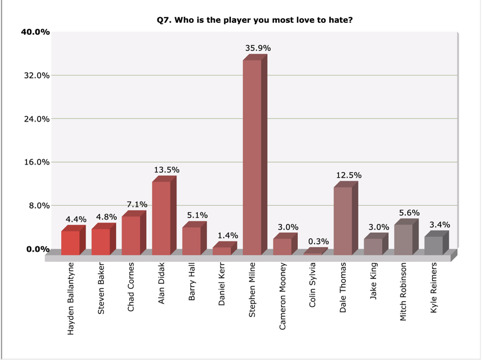
The Herald Sun runs many polls asking AFL fans for their opinion on a range of topics and share the results as well as create many articles based off it.
In the sports industry, data journalism means there is a whole new area for stories to be penned. For many casual sports fans, deciphering stats sheets and data after a game makes their eyes cross. The use of jargon, acronyms and symbols followed by a series of numbers is difficult to understand, but the information which is carries can be incredibly interesting and relevant. It is then the job of the journalist to explain what the stats mean in a way that even the most casual fan understand. Many organisations create entire stories based purely off stats in the lead up to games, and pages of newspapers (such as the Herald Sun after a weekend of AFL football) breaking down games and using stats to back up their point.
To go with that, every social media post shared by a sports team, league or athlete can have an article based around it. The post itself does not even necessarily have to be overly newsworthy, such as former Australian cricketer Shane Watson’s twitter being the subject of trolls. Sometimes, however, the posts are newsworthy and would be a news story anyway, such as Houston Rockets General Manageer Daryl Morey tweeting about the China-Hong Kong issue on the eve of NBA preseason games taking place in China.
Digital journalism is creating a range of new opportunities for those wanting to be journalists. There are a range of purely digital journalists employed by traditional media outlets, tasked with mining/sourcing, interpreting and analysing said data (Zanchelli & Crucianelli 2011). Many of these people may have little experience in journalism, but be proficient in computer science or other similar fields.
The digital landscape has also allowed for global collaboration. In a similar way to information being more accessible than ever, contacting and communicating with those on the opposite side of the world can be done instantly through apps like Skype and FaceTime. This had led to year-long, international breakthrough investigations such as the ‘Panama Papers’.
youtube
There are a handful of issues that come with the increased use of digital media in journalism- being the legality and ethics of mining for data, the use of anonymous sources, verifying facts and the credibility of some sources.
Mining for data brings with it a grey area in terms of how it is sourced. Journalists should always be cautious of where, how and from whom any data is collected. Part of this process should include looking at any potential bias, agenda or partisan and contextualising it (McBride 2016).
References
Kayser-Brill N, Valeeva, A & Radchenko I 2016, Transformation of Communication Processes: Data Journalism, viewed 15 October 2019, ResearchGate
Kwak K, Hong S & Lee S 2018, ‘An Analysis of a Repetitive News Display Phenomenon in the Digital News Ecosystem’, Sustainability, viewed 15 October 2019
McBride, R 2016, ‘The Ethics of Data Journalism’, University of Nebraska-Lincoln, viewed 15 October 2019
https://digitalcommons.unl.edu/cgi/viewcontent.cgi?article=1010&context=journalismprojects
Zanchelli, M & Crucianelli, S 2011, ‘Integrating Data Journalism into Newsrooms’, International Center for Journalists, viewed 15 October 2019
https://ayomenulisfisip.files.wordpress.com/2011/02/integrating-data-journalism.pdf
0 notes
Text
Mobile Betting
It has never been easier to place a bet. Whether it be gambling, sport or more obscure things such as reality television, elections or award ceremonies, placing money on the chance of something happening is as easy as unlocking your phone and pressing a few buttons. In Australia, for better or worse, betting is now seen as a part of the culture. Around 574,000 Australians were believed to have ‘regularly’ placed bets on sport (Armstrong & Carroll 2017), with total betting expenditure surpassing $1 billion in 2017 (Victorian Responsible Gambling Foundation 2018). The increase in money spent on betting is because mobile betting applications have made it so everyone has a mobile betting shop in their pocket, and the amount of advertising viewers see during sport makes it near impossible to avoid.
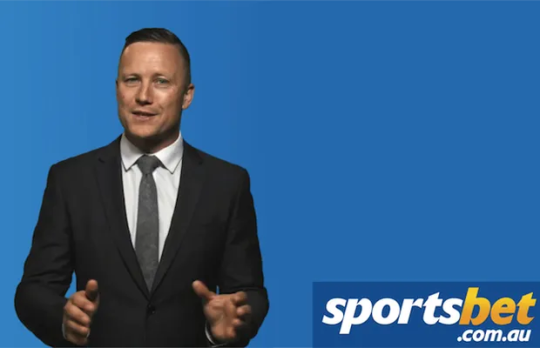
Former AFL player Nathan Brown is the face of SportsBet- and many betting agencies are using former players in their advertising to utilise their existing fanbase.
Betting has had a massive impact on sport, for a number of reasons. Similar to that of fantasy sports, betting on games makes people more invested in them and naturally would make them want to tune in or potentially attend more games. Sports consumers want excitement and to have a personal involvement in the game, both of which having money placed on a game will bring.
There are strict regulations across Australia regarding when gambling can be advertised on television, but betting companies are constantly toeing the line in order to encourage as many people as possible to spend their money. These rules were much more strict in America, which did not allow any sports betting for fear of corruption. These have now been significantly loosened, and now the ‘big four’ sports have numerous casino, gambling and fantasy sports partners. This brings with it an estimated $4.2 million for the NBA, NFL, NHL and MLB (Steinberg 2018). Several franchises have already agreed to build sports betting ‘lounges’ at their stadiums where fans can place bets and watch the game in luxury (Blanco 2018).
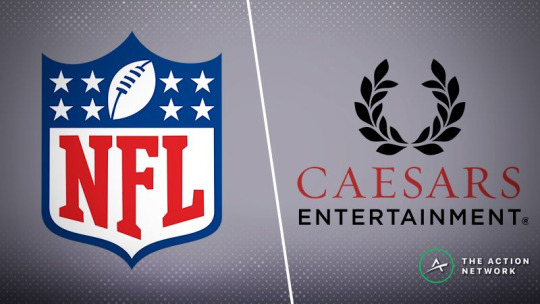
The NFL partnered with Caesars Entertainment in January 2019 as the league’s first casino sponsor. Although the partnership clearly states that the partnership was for the casino section alone and not gambling, fantasy or sports betting, it signals a shift in the direction of allowing these sponsors. Caesars had existing partnerships with seven NFL teams (National Football League 2019).
The biggest challenge associated with sports teams and leagues partnering with betting companies is that it seemingly romanticises gambling and sparingly shows the negatives that can be associated. The accessibility of having a mobile betting shop available on your mobile phone makes for a dangerous potential, as around 70% of young men are at risk of or currently experiencing harm as a result of gambling (Jenkinson, de Lacy-Vawdon & Carroll 2019). The average sports bettor in Australia is a young, single man with high disposable income and losing around $1000 per year, attributing to Australia’s $24 million in losses (Victorian Responsible Gambling Foundation 2018). With betting being available 24/7 in the comfort of your own home, it makes putting a bet on at any time, any where in the world, incredibly easy.
It can be argued that the bombardment of gambling advertising involved in a sports broadcast has added to the normalisation of gambling in society. It isn’t uncommon to hear someone say a team is favourite to win a match by comparing the betting odds instead comparing players and stats. Many people under 18 are now placing bets using mobile betting apps. As well as being illegal, it is also leading them down a dangerous path of believing this is normal behaviour.
Another issue is that of match fixing, spot betting and other such behaviour by players, coaches or match officials to predetermine the outcome of games for payoffs. Former NBA official Tim Donaghy was caught, charged and imprisoned for betting on games he was officiating.
youtube
Similar instances have happened with cricket players, AFL coaches and NCAA football coaches.
I don’t see an issue with sports betting. I understand why some are concerned with the amount of betting associated with sport, especially in Australia, but I believe it can be enjoyed in moderation and with an understanding of what is happening. Children should be educated on responsible gambling in a similar vein to education on drugs, alcohol and other such dangers.
References
Armstrong, A & Carroll, M 2017, ‘Sports betting in Australia, Australian Gambling Research Centre, viewed 13 October 2019
https://aifs.gov.au/agrc/publications/sports-betting-australia
Blanco, J 2018, Flurry Of Gambling Partnerships Are Enhancing The In-Stadium Sports Experience, viewed 13 October 2019
https://www.thelines.com/gambling-partnerships-stadium-experience/
Jenkinson R, de Lacy-Vawdon C & Carroll M 2019, ‘Weighing up the odds: Sports betting and young men, Australian Institute of Family Studies, viewed 13 October 2019
https://aifs.gov.au/agrc/publications/weighing-odds-sports-betting-and-young-men
National Football League 2019, NFL selects Caesars Entertainment as first casino sponsor, viewed 13 October 2019
http://www.nfl.com/news/story/0ap3000001007289/article/nfl-selects-caesars-entertainment-as-first-casino-sponsor
Steinberg, L 2018, ‘Sports Gambling Is Evolving More Rapidly Than Expected’, Forbes, viewed 13 October 2019
https://www.forbes.com/sites/leighsteinberg/2018/11/28/sports-gambling-is-evolving-more-rapidly-than-we-expected/#43dc59ba4eaf
Victorian Responsible Gambling Foundation 2018, Latest edition of the Australian Gambling Statistics, viewed 13 October 2019
https://responsiblegambling.vic.gov.au/about-us/news-and-media/latest-edition-australian-gambling-statistics/
0 notes
Text
eSports
The biggest debate when talking about eSports is ‘does it classify as a sport?’ Arguments can be made on both sides- with the debate of the ‘physicality’ required to be successful a big spot of conjecture. League of Legends, one of the biggest and most well known eSports games, released a video highlighting where they stand on the issue.
youtube
Regardless of where you stand on that debate, there is no argument on the massive popularity and success of eSports. Almost 500 million people watch some form of it every year, with that number rising every year.

The split between casual fans and enthusiasts is shortening
There are many different types (genres) of eSports- multiplayer online battle arena, first-person shooter, fighting, strategy, racing, collectable card games and so many more. With so many different options for games suiting a range of demographics, along with the global reach of eSports, the audience and revenue are set to continue rising for the foreseeable future.
A new area of sport, as eSport is, brings with it the potential of an entirely new fanbase. Similar to that of fantasy sports, eSports does not necessarily attract traditional sports fans, particularly fantasy games. Many sports organisations are seeing this as an opportunity to partner with an eSports team, and some leagues are hopping on the bandwagon and creating entire leagues.

It is undeniable that eSports is a profitable area, highlighted by Amazon purchasing streaming organisation Twitch for $1 billion. With this, comes a whole new revenue stream and opportunities for sponsors. Many mainstream sponsors are already flocking towards leagues and individual teams, with around $517 million spent by brands including $266 million on sponsorship alone (Intergalactic Gaming 2018).
A number of colleges in America are now also offering eSports scholarships. Although they are not on the same level as a typical basketball or football scholarship in terms of fame, fortune or the level of scholarship itself, it is giving an opportunity to those who may not have an opportunity otherwise to get an education. The National Collegiate Athletic Association (NCAA) does not govern eSports as it does recognise it as a sport, meaning athletes can be paid for tour names whilst in college (Neilus 2019).
There are however, a handful of issues surrounding eSports, excluding the stigma that all eSports athletes are ‘nerds’.
The biggest challenge is that of addiction. The American Psychiatric Association notes that gaming could qualify for a diagnosis of ‘gaming disorder’ (American Psychiatric Association n.d.). Many people use video games as stress relief or down time, however this can easily be overdone and turn into a disorder (Nielsen & Karhulahti 2017). In some regions, it has reached pandemic level and caused deaths in young people (Swingle 2017).
The eSport rising is an exciting one for those who have enjoyed playing video games their whole life. It gives those who were not lucky, or in fact, good enough, to live out their dreams of being on the the grandest stage.
References
888sport 2018, Why Are Traditional Sports Teams Investing In eSports?, viewed 13 October 2019
https://www.888sport.com/blog/e-sports/why-are-traditional-sports-teams-investing-esports
American Psychiatric Association n.d., Internet Gaming, viewed 13 October 2019
https://www.psychiatry.org/patients-families/internet-gaming
eSports Earnings 2019, Top 500 Highest Overall Earnings, viewed 13 October 2019
https://www.esportsearnings.com/players
Intergalactic Gaming 2018, ‘Esports - Bigger than Traditional Sports?’, Medium, viewed 13 October 2019
https://medium.com/@IGGalaxy/esports-the-next-generation-of-sports-7ac9ec6d71c
Lineups Betting 2019, Biggest eSports Live Events in History, 13 October 2019
https://www.lineups.com/betting/biggest-esports-live-events-in-history/
Nielsen, R & Karhulahti, V 2017, ‘The Problematic Coexistence of “Internet Gaming Disorder” and Esports’, IT University of Copenhagen, viewed 13 October 2019
https://pure.itu.dk/ws/files/82428866/Nielsen_R._K._L._Karhulahti_V._M._2017_._The_Problematic_Coexistence_of_Internet_Gaming_Disorder_and_Esports.pdf
Neilus, J 2019, ‘What it's like to go to college on an esports scholarship’, PC Gamer, 30 September, viewed 13 October
https://www.pcgamer.com/au/what-its-like-to-go-to-college-on-an-esports-scholarship/
Newzoo 2019, Global esports market report, Newzoo, viewed 13 October 2019
https://resources.newzoo.com/hubfs/2019_Free_Global_Esports_Market_Report.pdf?utm_campaign=Esports%20Market%20Report&utm_source=hs_automation&utm_medium=email&utm_content=76220213&_hsenc=p2ANqtz-9gi-iF9i9r_Lkgh2aAwh9436a7_cDYkkX-6dZcxjYefuLbHxcqwa5MIaXKFB20ugRajK16DOnvzRi7lYT2mJ25u3NyfQ&_hsmi=76220213
Swingle, M 2017, ‘Gaming Addiction’, Biofeedback, vol. 45, no. 1, pp. 14-18, viewed 13 October 2019, ProQuestThe eSport rising is an exciting one for those who have enjoyed playing video games their whole life. It gives those who were not lucky, or in fact, good enough, to live out their dreams of being on the the grandest stage.
0 notes
Text
Fantasy Sport
Fantasy sports are organised competitions where fans select imaginary teams/players based on real life contests and compete against others based on the players’ stats and performance. With origins dating back to post-WW2 America, the fantasy sports industry has boomed to a point now where most top-tier sports leagues now have official fantasy games where players can win tens of thousands of dollars and gain tips from professional ‘experts’ (Doctor SuperCoach 2019). Whilst the initial idea of fantasy sports was to test people’s knowledge of athletes and add to the overall sport viewing experience (similar to sports gambling), it has now expanded to include those who are not big into sport, but has now grown to include those who are non-traditional fans.

Interest and participation in fantasy sport is on the rise.
Fantasy sports are having a massive impact on the sports industry. By having fantasy sports players pick an entire team for the season, it makes more games important to that individual, and chances are they will watch more games throughout the season (Busch 2019). It also grows the industry as a whole, with a vast range of content being created specifically catered around fantasy sport. There are websites, television shows, radio shows, podcasts, online series’ and a range of other platforms all centred around fantasy sport, which Fantasy Sports Trade Association estimates at being worth around $7.22 billion in 2017 (Mazza 2018). All of this content is driving fans back to the sport itself, increasing broadcast views and reach online.

The most popular fantasy sports in the world are the ones with the biggest reach and easiest accessibility.
A range of new opportunities have been created through the advent and massive increase in popularity of fantasy sport. New jobs and revenue streams for both the sports, fantasy participants and third parties have been carved out. With organisation creating and running their own fantasy leagues, and charging participants to enter, a whole new profit area has been created. Fantasy sport organisations such as DraftKings make a massive profit, with 2017 data showing hundreds of millions of dollars per month is spent on the fantasy sport (Gouker 2017).
On top of this, many non-traditional sports fans are also drawn to participate in fantasy sport because of the data element and ‘moneyball’ style approach.
The biggest issue fantasy sports create is the legal grey area around it, and the possibility of spot betting or tainting results of games for money. Many athletes have been caught taking or throwing games for big pay offs, and this could be a bigger issue in the future. Fantasy sports are similar to gambling from a regulation aspect, they are legal in Australia but have to be heavily regulated to make sure everything is above board.
American company DraftKings has recently entered the Australian market and has declared they are not a gambling agency as they are a game of ‘skill and not luck’, but still are projected to bring in more than $14 billion to 2020 (Farquhar 2018).
Another issue could be the lack of attention paid to the contest. As more focus shifts to the fantasy aspect and less on the end result, athletes could be more focused on chasing stats as opposed to winning the game itself.
The fantasy sports industry has done a lot of good to the sports industry. It has brought in a whole new demographic of fans, in those who love stats and analytics. The perceived negatives are very similar to that of sports gambling, as both are very similar and have the potential to cause addiction.
References
Bugsch, R 2019, A look into the growing fantasy sports industry, viewed 9 October 2019
https://theaggie.org/2019/01/27/a-look-into-the-growing-fantasy-sports-industry/
Doctor SuperCoach 2019, ‘Doctor SuperCoach: How to finish your team on a tight budget’, Herald Sun, 25 June, viewed 9 October 2019
https://www.heraldsun.com.au/sport/afl/supercoach-news/doctor-supercoach-how-to-finish-your-team-on-a-tight-budget/news-story/8dc7d41d3f25eb89458ea12d6ccd701c
Dorda, L 2019, ‘The Fantasy Sports Games phenomenon’, Johan Cruyff Institute, viewed 9 October 2019
https://johancruyffinstitute.com/en/the-expert-corner-en/the-fantasy-games-phenomenon/
Farquhar, P 2018, ‘The world's biggest daily fantasy sports company DraftKings is off and running in Australia’, Business Insider Australia, viewed 9 October 2019
https://www.businessinsider.com.au/the-worlds-biggest-daily-fantasy-sports-company-draftkings-is-off-and-running-in-australia-2018-4
Gouker, D 2017, ‘How Much Money Did DraftKings, FanDuel And The DFS Industry Make In The Past Year? Now We Know Almost Exactly’, Legal Sports Report, 19 October, viewed 9 October 2019
https://www.legalsportsreport.com/16152/draftkings-fanduel-dfs-revenue/
Mazza, L 2018, ‘The Impact of Fantasy Sports on Sportscasting and Fandom’, Full Sail University, viewed 9 October 2019
https://hub.fullsail.edu/articles/the-impact-of-fantasy-sports-on-sportscasting-and-fandom
0 notes
Text
Digital Media and the Amplification of Global Sport
The digital media landscape has made it easier now than ever for anyone to consume any content they should choose. It is the end result of technology, content and storytelling all with the end goal being customer satisfaction, and ideally, profit and customer retention (Centre for Digital Media 2019). This can come in the form of visual, audio, written, interactive or any other kind of format that can be programmed and shared digitally through websites, social media or mobile applications. With digital media ever-evolving, it can be argued that it is stepping on the toes of traditional media, and forcing it to ‘keep up with the times’ and evolve to incorporate these new forms (Roazrio 2013).
This has had a massive impact on the sports industry in a number of ways, both locally and internationally. A 2017 study showed that the average Australian spends more than twice as much time viewing sports content on their phones compared with desktops (Nielson 2017). This perfectly highlights the shift in mindset of the population and the thirst for immediate gratification. The mobile shift has allowed athletes themselves to interact with fans and gives both them and the organisations they represent a chance to attract new fans globally (Connolly 2015).

With this shift online, the world has seemingly shrunk, as it is now easier than ever to access any content from all parts of the world. Many sports leagues have used this as an opportunity to send their sports global. Nowadays, almost every major sports league is accessible to watch live, either through subscription television or streaming.
The NBA is leading the way in this field with its League Pass including a range of different viewing options to cater for every type of fan (Collins 2019) and an option to pay 99 cents to watch ten minutes of a game (Lemire 2019). All told, Australians are the biggest profit and subscribers to League Pass outside of America and China, and watch LeBron James’ LA Lakers and Ben Simmons’ Philadelphia 76ers more than any other team (Uluc 2019). This shows that Australians enjoy watching the highest quality product possible, regardless of where in the world it is based, or if they have to pay for it. The clear interest in basketball in general in Australia, and particularly the NBA has led to a relationship between it and the NBL, which greatly benefits the Australian league.
On the flip side of that, the shrinking nature of sport can cause serious problems to local sports, especially those in small markets. This is evident with both the NBL and A-League in Australia. The A-League is far from the top in terms of quality, and is forced to compete not only with cricket, but International soccer as well. As said before, Australians chase quality over location, which has seen the A-League continue to drop off in terms of viewers, fans and money. This has then led to it struggling to find a television broadcast deal, and ultimately, the steady decline in overall quality of the league.
The NBL was on a similar path in terms of quality, ratings and overall fans, with one season even being played without a television broadcast deal. This was in no small part due to the massive success of the NBA in Australia. With many Australians playing in the NBA and the overall rise of basketball in the country, the NBL transformed its business model and partnered with the NBA to benefit both organisations.
youtube
Overall, digital media has had a positive effect on the sports industry and benefits the fans, media, players, leagues and organisations. The major downside to sports leagues now being global is that it puts extra pressure on smaller leagues and forces them to become creative in attracting new fans.
References
Centre for Digital Media 2019, What Is Digital Media?, viewed 8 October 2019
https://thecdm.ca/program/digital-media
Collins, T 2019, ‘We Got a Preview of What SNA’s League Pass May Look Like Next Season’, Fortune, viewed 8 October 2019
https://fortune.com/2019/06/10/we-got-a-preview-of-what-nbas-league-pass-may-look-like-next-season/
Connolly, E 2015, ‘Special report: Sport in the age of social media’, Sports Pro Media, viewed viewed 8 October 2019
http://www.sportspromedia.com/special-reports/special_report_sport_in_the_age_of_social_media
Lemire, J 2019, ‘NBA League Pass Now Offers 10-Minute Segments for 99 Cents’, SportTechie, viewed 8 October 2019
https://www.sporttechie.com/nba-league-pass-10-minute-segments-99-cents-basketball/
Nielson 2017, CONNECTING PEOPLE WITH SPORT: 11.2 MILLION AUSTRALIANS GO ONLINE FOR SPORTS CONTENT, viewed 8 October 2019
https://www.nielsen.com/au/en/insights/article/2017/connecting-people-with-sport/
Rozario, R 2013, ‘New Media and the Traditional Media Platforms: Introspection on the Differences in Technical and Ideological Factors and Audience-integration Patterns between New Media and Traditional Media’, International Journal of Social Science and Humanity, vol. 12, no. 3, pp. 43-61.
0 notes
Text
Subject Reflection
In my opinion, Transition to Professional Practice was the most important and significant subject through the entirety of the course. Coming in to this subject, I had a solid understanding of various aspects of the sports media industry and felt confident in my abilities to complete various roles, but was not confident in working in a professional environment or at industry standard. While a lot of the things we learnt were common sense, it was incredibly useful to be told these things by someone who works in the industry and be given examples of what is and is not industry standard.
I learnt a range of things throughout the subject, the most significant of which is the best way to set out my resume. Before this class, my resume was slabs of text compiled with irrelevant information. I had one resume that I would not change depending on what I was applying for. After learning how a professional resume should look, I have completely mine and it looks much cleaner, crisper, easier to read and overall much more professional.
I also created an online work folio and spent much more time and care in my LinkedIn profile. I have always been careful with what I share on social media, but after discussions in class and various professionals discussing how influential a positive online presence and examples of your work are, I have started sharing a lot of my work online.
TTPP has given me a range of experiences that could not be had anywhere else. The interview training and learning about STAR responses to questions were unmeasurable in value. Prior to this, I had never experienced a serious job interview before and as such, did not know how they were conducted, what to expect or even what to say. I was still nervous heading in to the internship interviews, but after receiving feedback from several people who conducted the interviews, was told that my experience, work standard and personality is that of someone ready to be in the work force.
After finishing this class, I feel I am now ready to work in the sports media industry. The upcoming internships will be a true test of how I will perform and how comfortable I am working, but if it were not for TTPP, I would not be prepared in the slightest.
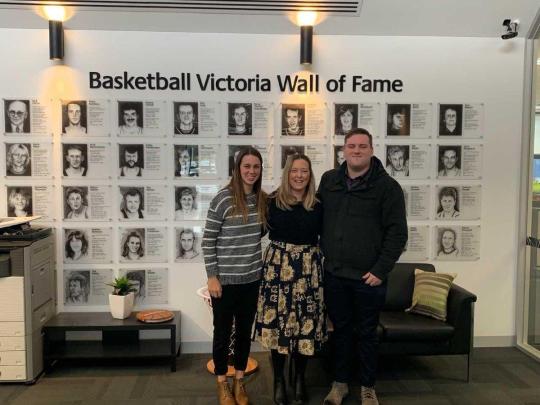

The things I learnt in this class I can carry with me throughout my entire professional career.
0 notes
Text
Short List Interviews
Interview Experience
My second round interviews were a great learning experience for me. I received interviews with SEN, AFL Outer East, Basketball Victoria, Melbourne Stars, Cricket Southern Bayside and Cricket Victoria. I was happy to receive six short list interviews of the seven I applied for, and believe this was a testament to my hard work, preparedness and the amount of effort I have put in over the last two and a half years both in and outside of university to put myself in the best position.
The interviews themselves were intimidating at first, but an incredibly valuable learning experience. It was handy to have the opportunity to be in a professional interview environment to understand what is required not only in the interview itself, but in preparation and the lead up, whilst not having as much pressure on our shoulders.

My Performance
Having received four position offerings of six, I believe I performed well in my interviews. I also received high marks in the interview assignment, further highlighting my performance. My marks ranged from average to exceptional dependant on the interview, but I consistently received strong marks for my body language and presentation. I believe this is due to me being well prepared and researched, which allowed me to be confident heading into the interviews. Being as prepared as I was, my STAR responses were prepared and I was able to execute them well when necessary and speak in a loud and clear voice.
My two best interviews were with the Melbourne Stars and AFL Outer East. These two interviews were the ones I was the most prepared for and felt the most relaxed heading in as I was very familiar with both organisations. I was able to quickly get a gauge on the mood of the interview and adapt my body language and responses to be appropriate.
How I can I improve in the Future
I still have plenty to improve on in interviewing. The wide range of marks I received for the interview assessment (highest mark being 82 and lowest mark being 64.5) shows that I need to improve my consistency, and if I am having multiple interviews in a short space of time, spend equal time researching and preparing.
At the end of my second interview with AFL Outer East, Region General Manager Aaron Bailey gave me feedback in terms of how I interviewed. He said I seemed very nervous at the beginning of the interview but relaxed as it progressed. He noted that while I was well researched and understood the role and how my UVP can benefit the organisation, I was not confident in myself and it showed in my nerves. He also reiterated to me to be myself and let my personality shine through. This feedback was very helpful and I have noted it and plan to put it into use in future interviews.
0 notes